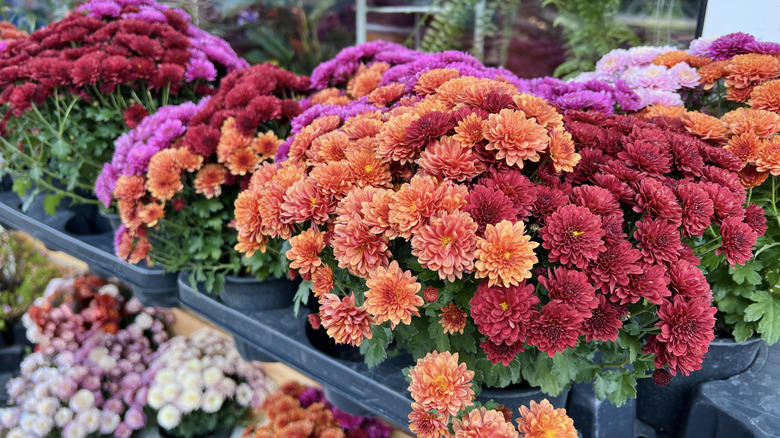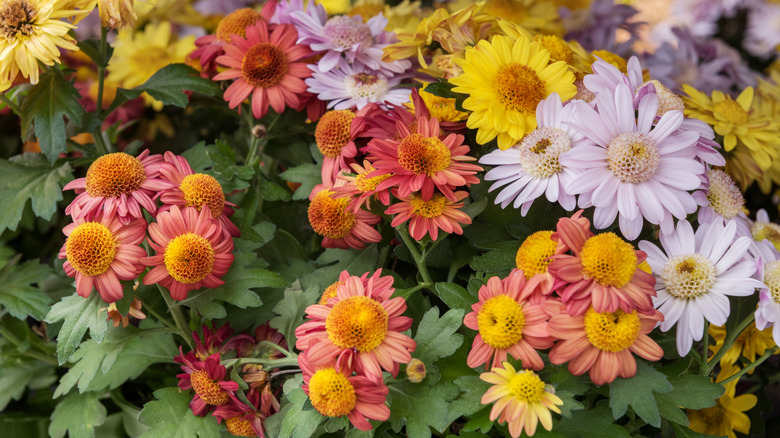Help Your Mums Thrive After Blooming With One Simple Addition To The Soil
While mums, or Chrysanthemum spp., are relatively easy to care for, they do have some specific needs. To keep your mums alive, they need a bit of love and attention every year, replanting, pruning, and fertilizing. However, caring for these plants and making sure they are thriving are two different things. If your mums are green and healthy, but struggling after blooms, the problem might be that there aren't enough nutrients in the soil. With hungry plants like mums, fertilization is a very important part of caring for them. Without the right nutrients, you won't find yourself getting an abundance of blooms like you want.
Pretty much as soon as the growing season starts, you can look at adding nutrients to their soil. Maksim Kazakou, a botany expert at Plantum, said during an interview with the Martha Stewart website, "Generally, this plant needs nitrogen fertilizers during the first half of the growing season." He continues, "In the second half, you should opt for phosphorus and potassium fertilizers."
Essentially, what this means is that while the plant is growing, but not blooming, you want to focus on adding nitrogen. Then, once the flowers appear, you can switch to using fertilizers higher in phosphorus and potassium to keep your plant strong. Kazakou doesn't specify what kind of fertilizer to use, but since the switch in types depends heavily on your plant, it may be better to use a liquid fertilizer that you can adjust easily as needed.
Finding the right fertilizer method for thriving mums may not be as simple as it sounds
Kazakou's method isn't the only option. In fact, while most gardeners will agree that mums need a lot of food, feeding methods appear to differ. A fertilizer with a balanced mix of nutrients can potentially be used until blooms form. Some gardeners also use one round slow-release fertilizer of around 12% nitrogen, 6% phosphorus, and 6% potassium (12-6-6 NPK) shortly after the danger of the last frost in spring has ended.
Other people suggest going with liquid fertilizers so you can adjust easily throughout the season and ensure they are constantly being fed. They also suggest using high phosphorus at the beginning (10-18-8 NPK), switching to nitrogen in the middle (15-8-15 NPK), and then potassium in the end (4-10-20 NPK) in the end. There are also differences between garden mums and florist mums, so it's important to know which one you have, and the specific care they need to thrive. In short, while this method is certainly worth trying, you may have to play around with your fertilization methods until you find what works best for your garden.
Realize that nutrients are important for mums, but it's not the only thing you have to do to keep your flowers thriving. Another simple trick that'll make outdoor mums last all season long – if they are in containers at least — is to repot them when you first buy them so they aren't root-bound.

